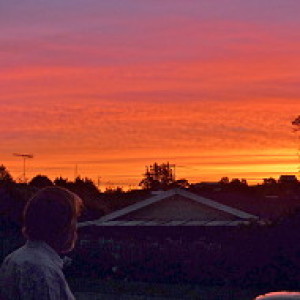In sad disuse
Yesterday evening I went to Kingsland to pick up Young L after he had been at a friend's home to mark the end of the school term. He had had a good time, despite his sprained wrist. On the way back I drove up School Road towards Morningside. Near the top of the road, I saw an old school building on my left. Young L and I talked about how I had never seen it before (nor had he, even though he had walked up the hill in the past), and we reflected on how much more observant I had become since joining blip. Then we got to the main road, and all I saw were the cars and the road.
The first Mt Albert primary school resulted from the Common Schools Act, which removed education from being the responsibility of the churches. It was built on this site by local residents (at their own expense!); the land was donated by a local farmer. The first pupils attended in 1870. The first school house was replaced in 1880 by a two-roomed wooden building. Due to rapid growth in the school roll, the school was added to and remodelled over many years. The last remodelling occurred in the 1920s, after which the Auckland Education Board decided to build a new school on a site little more than a kilometre away and slightly more central to the borough of Mt Albert, where it continues to this day.
The Auckland Education Board retained the original School Road property until 1954. Eventually the Crown split the school building off from the rest of the 1 acre site, which was subdivided for housing. The school and the land were granted to the Mt Albert Borough Council as a reserve.
The school building is still Crown property, under the Ministry of Maori Development. It is clearly deteriorated and deteriorating, being described by the Mt Albert Historical Society as “in a disgraceful state”. The front of the building (to the right) still has the school motto (Honour Before All) above the windows. There is also a more recent sign reading “Whare Tapere Inc”.
Whare Tapere were pre-colonisation pa based places of story telling, dance, music, games and much more. Although special buildings were at times erected, mostly whare tapere convened in a place conducive to the activity. It was the the traditional Maori venue for entertainment and enjoyment. The purpose of the whare tapere was expressed as “Kia kawea tatou e te rehia” (Let us be taken by the spirit of joy, of entertainment).
Some of the items of the whare tapere include songs and singing (waiata), stories and storytelling (korero), dance and dancing (haka), musical instruments, games.
During the 19th century there was a move of Maori from pa villages to the new towns, leaving behind aspects of the culture such as whare tapere. In recent years whare tapere have been undergoing a revival. Because much was lost, the new version will be a creation rather than maintenance or revitalisation

Comments
Sign in or get an account to comment.


